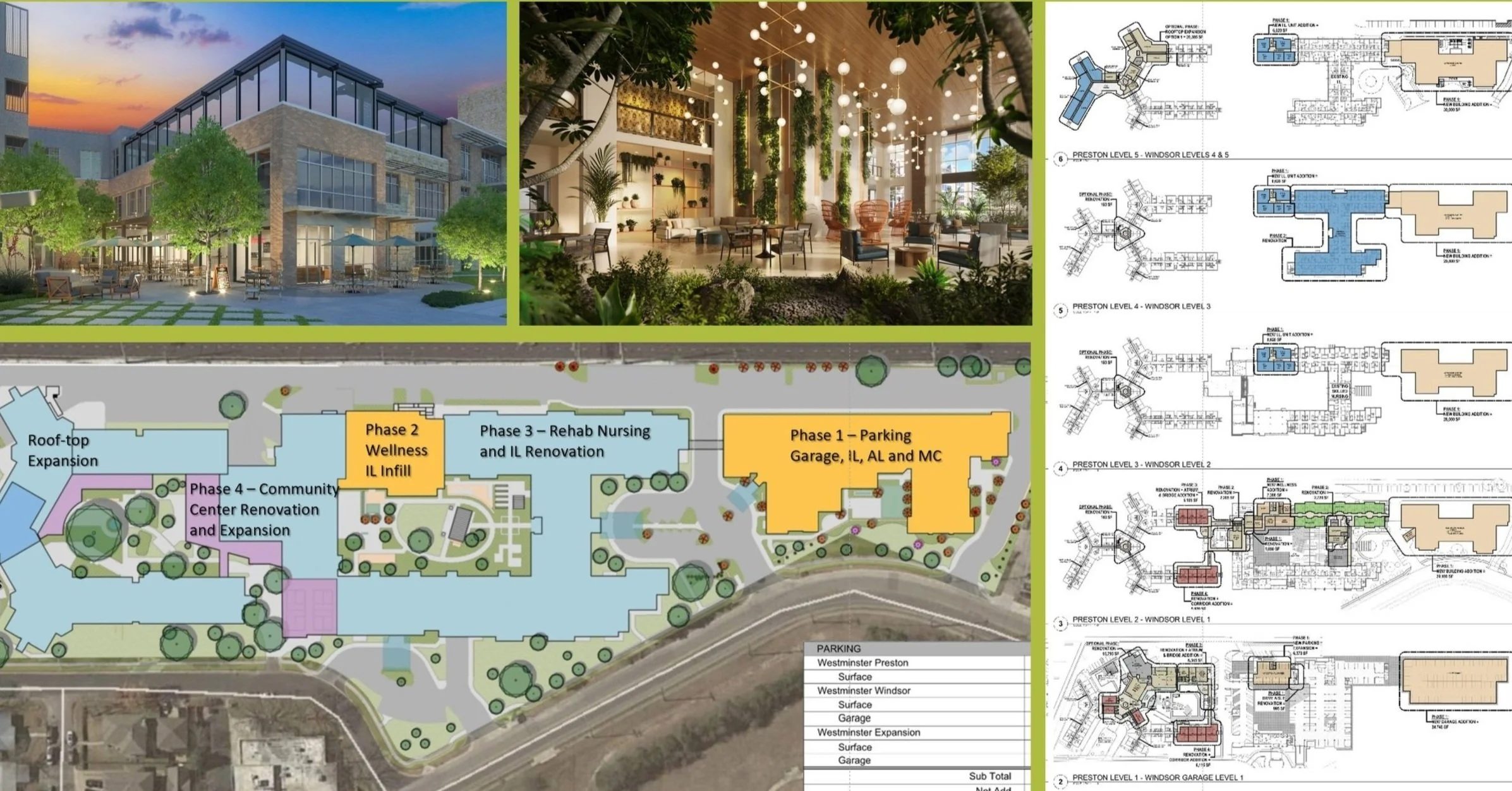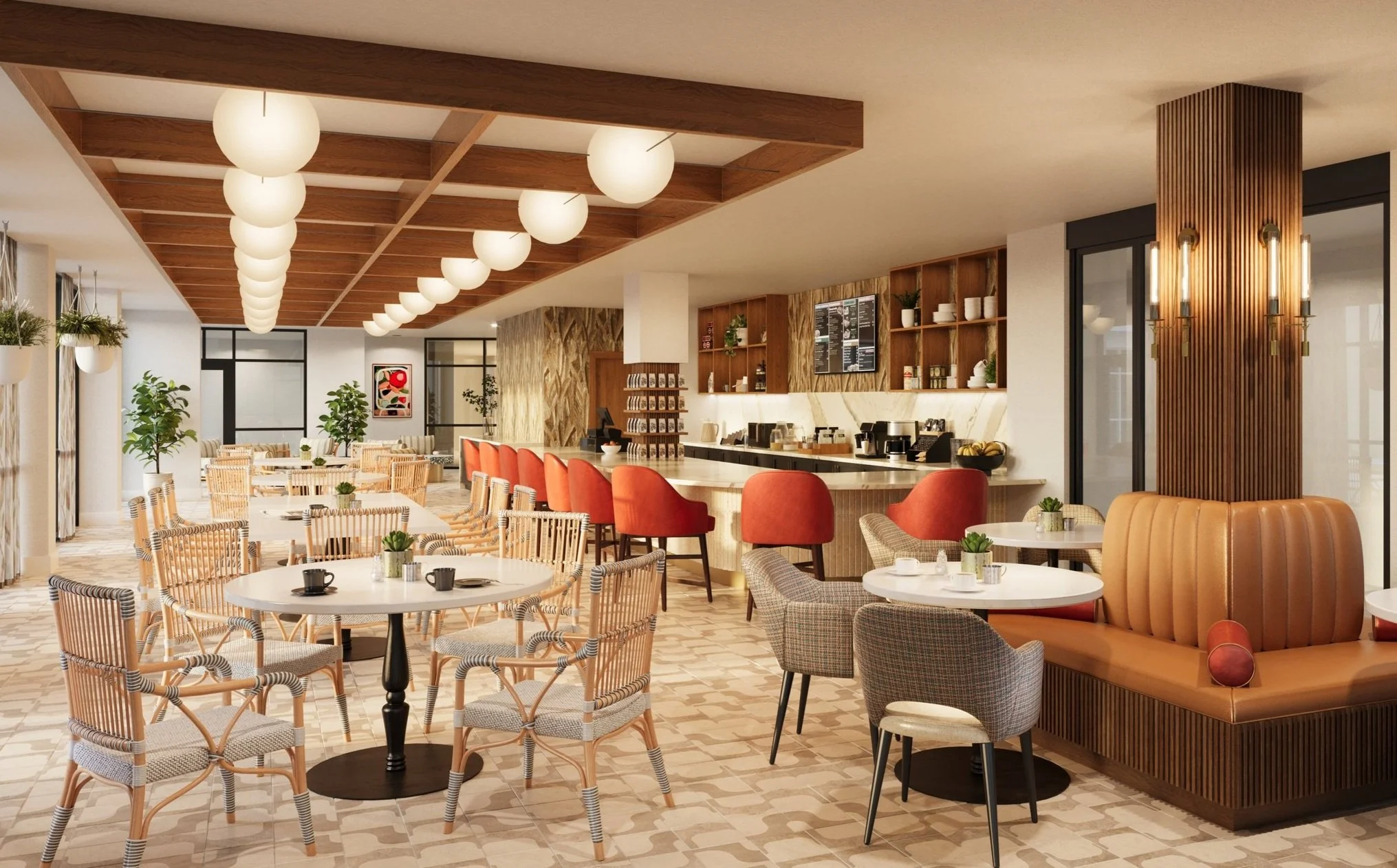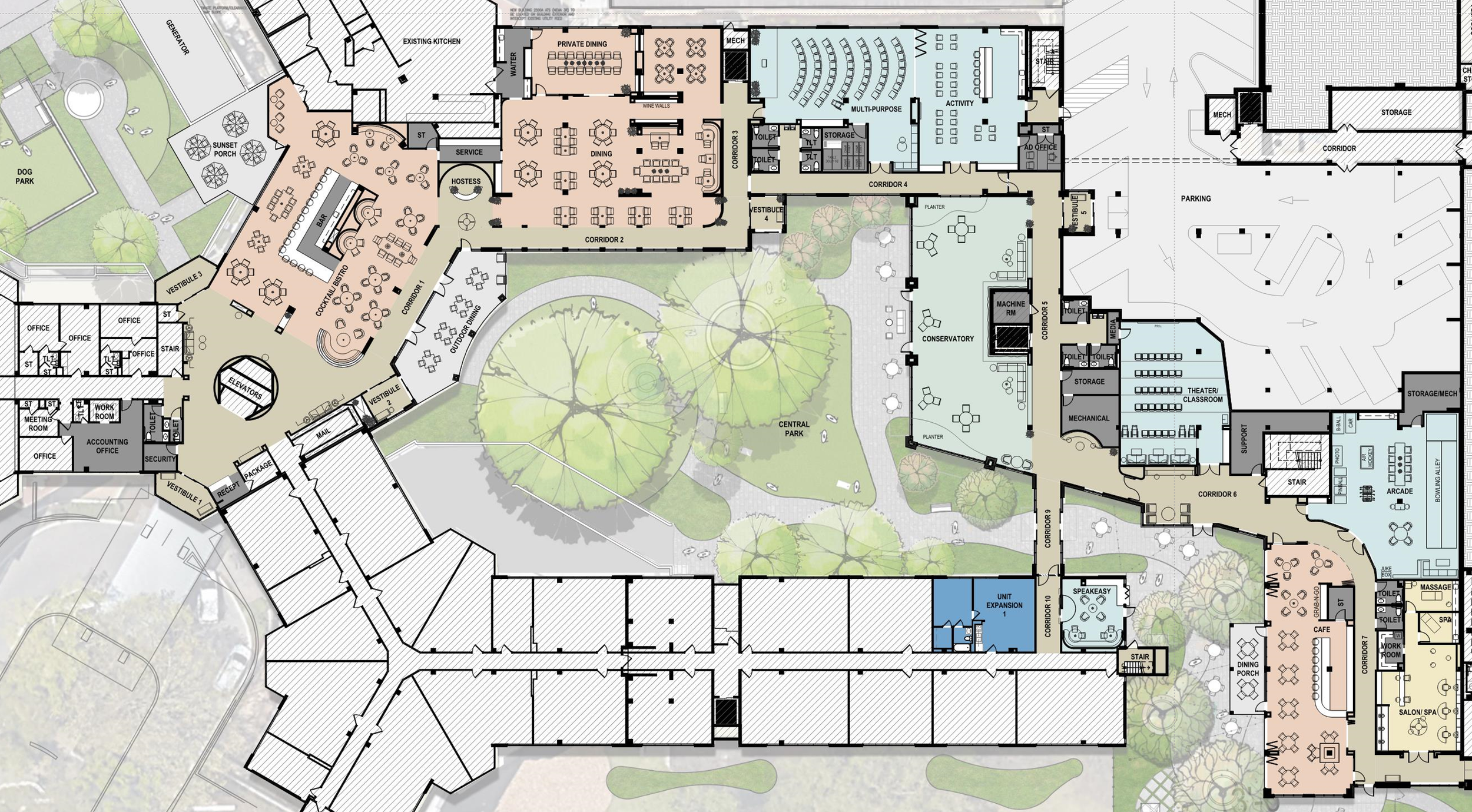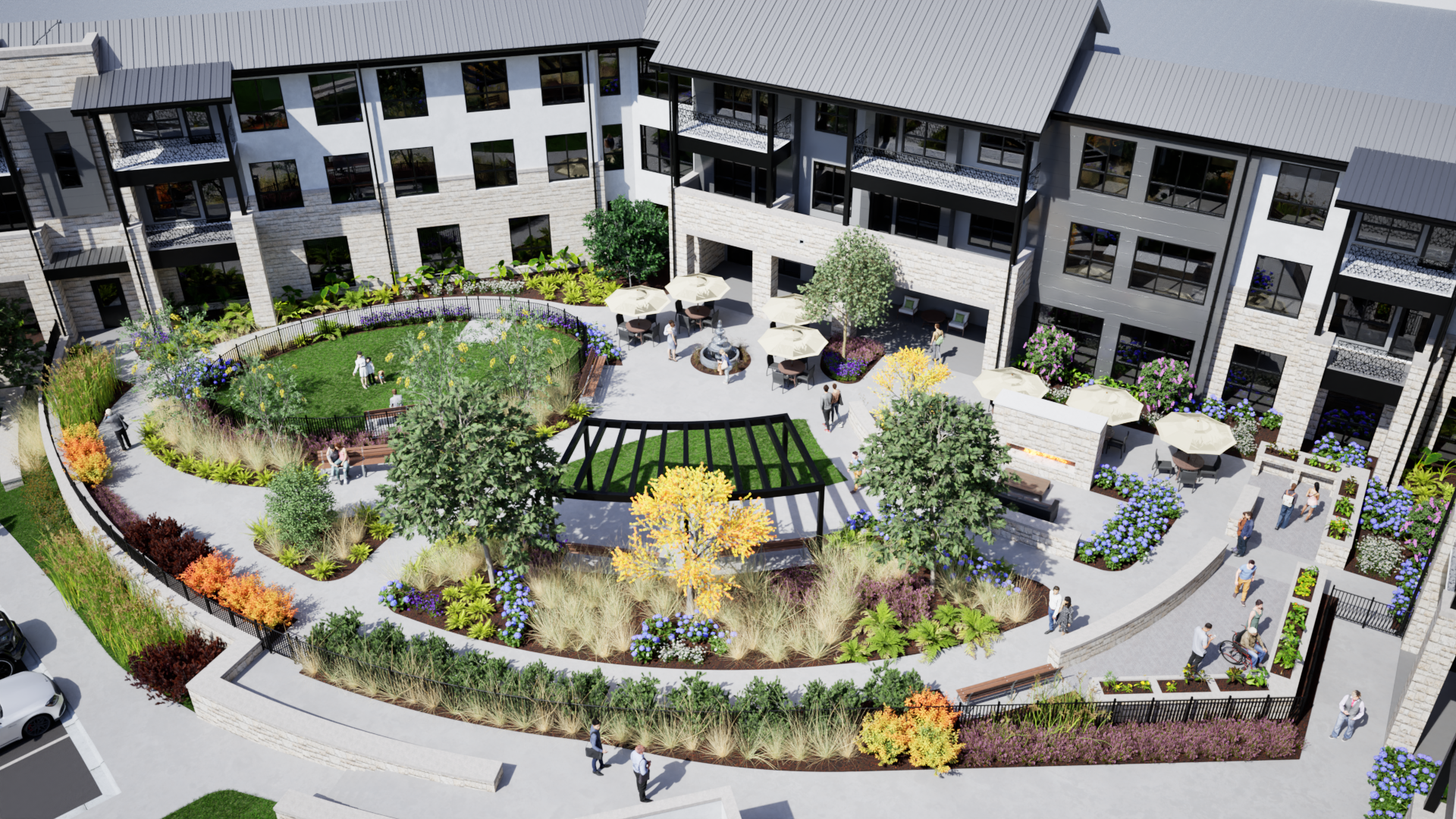Eight Keys to Successful Master Planning with Dan Novelli of LCS and Charles Borst with Westminster Retirement Community
Master planning is like knowing in advance where all the pieces go before you start the puzzle. More precisely, it is a vision and a road map built from the information and optics of a community’s operations, market needs and standards, and cost realities that must all be harmoniously combined with inspiration.
With master planning, you save the time, money, and challenges involved in trying to reinvent the wheel for every project. However, the wheel remains unique for each building. Master planning lets you take each portion of a project and break it into blocks that have been refined through knowledge, data, and experience from previous projects. These blocks, which are based on the programmatic needs of the client and serve as a roadmap to ensure requirements are met, can be finalized and shared with the team early on.
Effective master planning means blending future planning with analyses of the past. In other words, what will your senior living residents want years down the pike, and what have you learned from past projects that can help you save time, money, and resources while increasing efficiency moving forward?
Pi spoke with Dan Novelli, Senior Project Development Manager, LCS, and Charles Borst, Executive Director, Westminster Retirement Community, and together we identified eight keys to successful master planning that provide the biggest bang for the buck, eliminate (or at least minimize) problems such as budget overages or building delays, and consistently attract residents:
1. Have a 360-degree view. “Your vision needs to spread among everyone on your team, from builders and contractors to architects and lenders,” he said, adding that master planning shouldn’t be done in a silo.
2. Identify goals that align with your mission. Borst said, “Our campus has a vibrant feel and no wasted space. Activities are happening everywhere. This was what we wanted.”
3. Think team. “Work through the planning as a team that works well together. We did this and we were able to coordinate everything smoothly. We had a great plan; but when we asked for a little more, our team was able to accommodate us whenever possible,” Borst recalled.
4. Do your research. It is important to know what building features or amenities the most positive impact on residents will have before you get started. “We did a market study a few years ago, and then we updated it. We also established a resident expansion committee to provide input on our proposed plan. We stressed that we wanted a building they would love,” said Novelli. He noted, “Every space we’ve created, every amenity we added has been well received – from the cocktail lounge and gym to the bistro restaurant and rehab center. The ambiance in the bistro is a wow. People are enamored as soon as they walk in the door.”
5. Include trending amenities. Wellness is a growing interest on the part of residents and families. This is a trend that will only grow, as all senior living communities are seeing residents who are older and often have chronic illnesses and comorbidities. Borst said, “We now have a wellness clinic that is twice the size of what we had before. Our rehab space is the best in the state – it rivals hospitals and other entities in the area.” Know what prospective residents in your demographic area want and what the competition is offering.
6. Weigh the costs of your plan with potential financial benefits. “You need to do this carefully. We want to create efficient buildings and make sure they are functional for those living and working in them,” said Novelli, adding, “Having residents involved and an architect who listens to these people is essential.” In the case of Westminster, he offered, “This means design that enables residents and staff to get together for both planned and spontaneous activities. It inspires people to do things they’ve never done before, and this challenges our programming.”
7. Balance practicality with creativity. As you execute a master plan, you want to realize the goals of the board and the community but also provide something creative and full of life. Novelli said, “We hit the market right on the head. We sold all our independent living units in 60 days. To say we exceeded expectations is an understatement.”
8. Always be looking ahead. Resting on your laurels after a successful project is not an option that Borst and Novelli would ever consider. Looking ahead, there will be new and evolving trends and interests. Borst said, “In some spaces, amenities will challenge the status quo and bring choices to residents that some have never thought of before or had the opportunity to experience.” From pickleball courts, theaters, and conservatories to arcades and classrooms that encourage intergenerational activities, the sky’s the limit. He noted, “I did a presentation for residents on the future, and many people said, ‘I’ve never thought about the things you’re bringing in, but I love it.”









